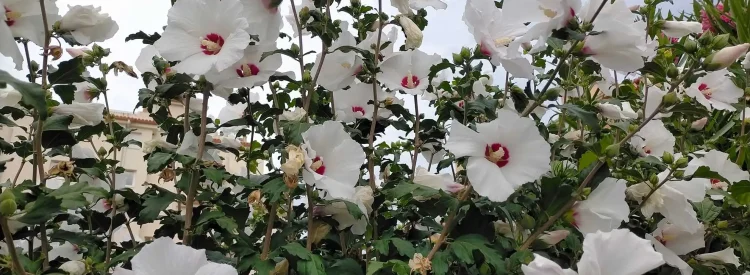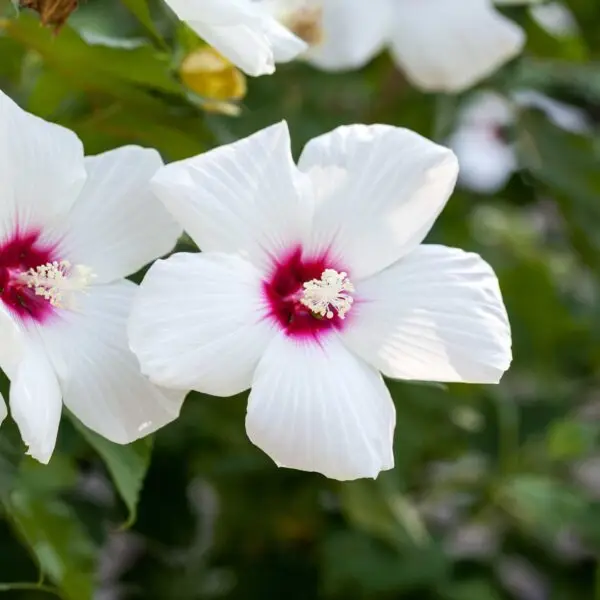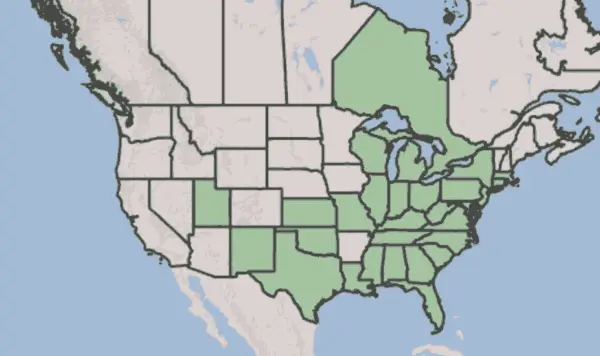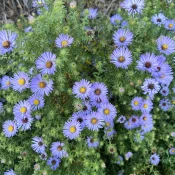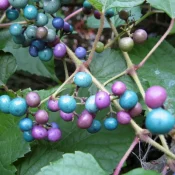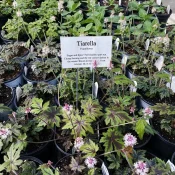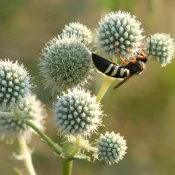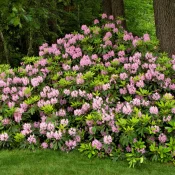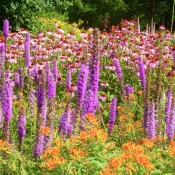Rose mallow is the native cousin of the hibiscus you’ll find at big-box stores. With flowers as large as dinner plates in shades of pink, red, and white, it’s a showstopper that also happens to be a pollinator powerhouse. Unlike its tropical relative, rose mallow is hardy, perennial, and comes back year after year. Plant it once, and it will reward you with towering stems and weeks of giant blooms.
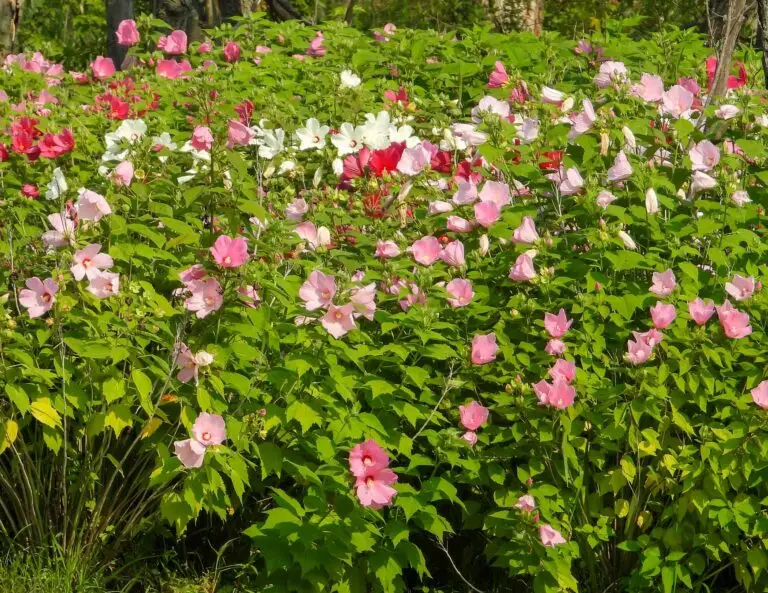
Is rose mallow a good choice for my yard?
Yes, if…
- You want huge, hibiscus-like flowers that return every summer.
- You have a sunny, moist spot—like a low-lying area, rain garden, or pond edge.
- You want a tall, dramatic perennial for the back of a border.
- You’re looking for a host plant that supports butterflies and moths.
Why rose mallow matters
- Pollinator magnet: Its massive blooms draw bees, butterflies, and hummingbirds.
- Perennial beauty: Plant once and enjoy flowers year after year.
- Native alternative: Unlike tropical hibiscus (H. rosa-sinensis), which dies after frost, rose mallow belongs here.
- Host plant: Supports caterpillars of species like the io moth and common checkered skipper.
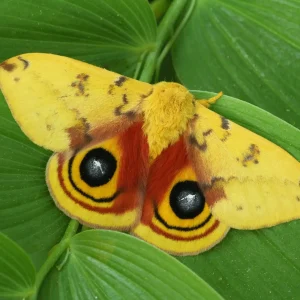
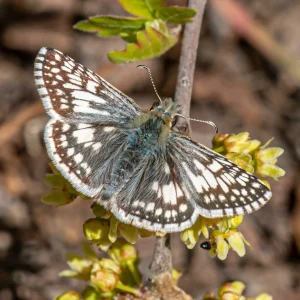
Rose mallow is a host plant for several butterflies
Some native plants offer beauty alongside support for butterfly populations; these plants are called host plants. Many butterfly moms will only lay their eggs on their host plant(s), and their caterpillars will only eat their host plants.
Rose mallow is the host plant for several butterflies and moths, including common checkered skippers, pearly wood nymphs, and the iconic io moth. Every rose mallow you plant has the potential to help these beautiful creatures.
New to native?
Before lawns and landscaping, native plants were here. They’ve fed birds, bees, and butterflies for thousands of years—and they’ll do the same in your yard. The best part? They’re easier to grow than you think.
Are hibiscus and rose mallow the same?
No, hibiscus and rose mallow are not the same plant. The plant commonly called “hibiscus” has the Latin name Hibiscus rosa-sinensis, and also goes by the common name Chinese hibiscus (as you can guess, it’s native to Asia). Here are their differences in a nutshell:
Hibiscus vs. Rose Mallow
Although their Latin names start with Hibiscus, these are different species.
Hibiscus
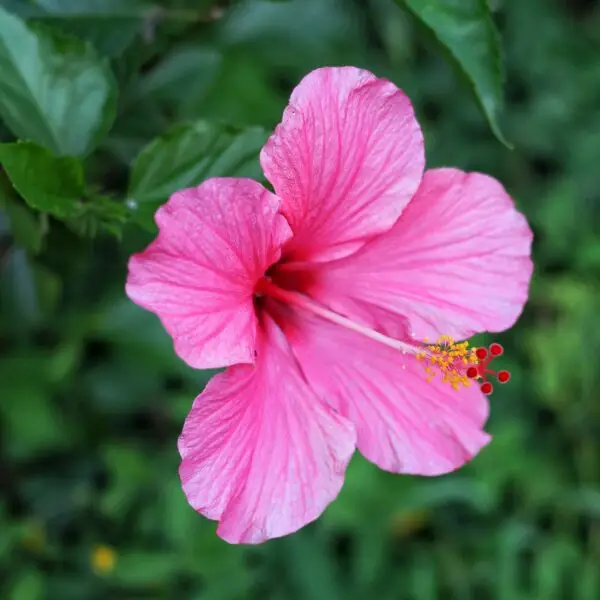
- Hibiscus rosa-sinensis
- Native to Asia
- Dies after a frost; needs to be replanted next year
- Super long stamen emerges from the center
How can I make sure I’m buying native rose mallow?
Look at the Latin botantical name. Latin names were invented for exactly this reason: every plant has only one Latin name. To ensure you’re getting the right native plant, check the tag. If you see Hibiscus moscheutos, you’ve got the native plant.
Don’t see the Latin name on the plant tag? Ask a staff member if they can help you. To find a specific native plant more easily, visit a native plant nursery in your area.
Where is rose mallow native?
Rose mallow is native to a wide swath of North America, from Massachusetts down to Florida and west to New Mexico.
How to grow rose mallow
Give rose mallow full sun and moist soil, and it will thrive. It’s perfect for rain gardens, low spots in the yard, or the edges of ponds. In winter, stems die back to the ground, but don’t worry! New shoots emerge in spring. Each bloom lasts only a day or so, but plants produce many flowers over several weeks.
Does rose mallow come back every year?
Yes! Rose mallow is a perennial, meaning plant once, and it will return year after year. Rose mallow will die back in the winter when frost comes (the leaves will fall off, and the stem will die), but then re-emerge triumphantly to make new stems, leaves, and flowers from its roots in the spring.
Where rose mallow shines in your yard
Use rose mallow as a dramatic vertical element at the back of borders, in rain gardens, or along fences where you want a wall of summer color. Its oversized blooms stand out against finer-textured plants and pair beautifully with yellows and purples. If you’ve got a sunny wet patch, rose mallow can turn it into the highlight of your yard.
What are good pairings for rose mallow?
Rose mallow is perfectly paired with other southern native plants that like wet areas. Some ideas for pairings include:
And that sums up our love letter to the incredible native flower rose mallow. These stunning flowers are epic in their height and their beauty. While each flower only lasts a few days, each plant puts out several, making the bloom time last a month or more. Finally, these are excellent choices for butterfly gardens since they are the host plant for several beloved ones—including the common checkered skipper and io moth. If you’re looking to add these to a rain garden, be sure to visit our Best Native Plants for Rain Gardens for more inspiration. Happy planting!
Sources
- Mt. Cuba Center, Swamp Rose-Mallow
- Garden Design, Rose Mallow
- Pyle, Robert Michael. Gardening for Butterflies: How You Can Attract and Protect Beautiful, Beneficial Insects. (2016), 187.
- Wikipedia, Chinese Hibiscus
- North Carolina Extension Gardener Plant Toolbox, Chinese Hibiscus
What if your feed was actually good for your mental health?
Give your algorithm a breath of fresh air and follow us.
